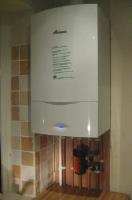 Add My Company
Add My Company
Sign In
Gas Safety – 10 Life Saving Tips
07-01-2016

Here at EMS we thought it may be useful to outline some important Safety tips to keep you and family safe against Carbon Monoxide Poisoning.
Using a Gas Safe Registered (formally known as CORGI Gas) Engineer.
Gas Safety Tips
Gas Safety Tips
The Gas Safe Register – previously known as CORGI is the UK’s official gas safety body and any boiler engineer you use should be on the Gas Safe Register.
Any boiler engineer you may use to work on your heating system must have an official Gas Safe Register Membership Card. If they still have a CORGI card, they are not registered, therefore, any works carried out would be illegal.
Gas Safe Register Logo Always look for this Gas Safe Register Logo on the card of your boiler engineer.
Gas Safety – Top 10 Tips
1. All gas appliances should be checked Annually
For safety and piece of mind you should always have your Gas Appliances checked. If you are on any benefit or a pension then you may be entitled to go on your energy companies Priority Services Register which will entitle you to a free annual Gas Safety Check.
2.Remember to check your engineer is Gas Safe Registered
Always check that your engineer is on the Gas Safe register before they undertake any work. All gas engineers have a Gas Safe ID card.
This is the Gas Safe ID Card:
Gas Safe ID Card EMS
3. Did you know that it’s illegal for someone who works for Gas Safe Registered business to do private work.
If someone who normally works for a reputable company, but is doing his own private work ( say at weekends ) is actually illegal and cannot sign off the work.
4. If you do know or suspect anyone working on Gas you should report them.
You can report them to Gas Safe Register and they will investigate their work.
5. Nominate your Gas work for Inspection.
You can nominate your Gas work for inspection free of charge from Gas Safe to make sure it’s been done properly if you’ve had work done within the last six months.
6. If moving to a new property, make sure you get all appliances tested.
Do not always assume the appliances are safe. Get them checked by a Gas Safe registered engineer.
7. Symptoms of Carbon Monoxide Poisoning.
The symptoms of exposure to low levels of carbon monoxide (CO) can be similar to those of many other conditions, such as food poisoning and flu. However, unlike flu, carbon monoxide poisoning does not cause a high temperature (fever).
The most common symptoms include:
headache
nausea (feeling sick) and vomiting
dizziness
tiredness and confusion
stomach pain
shortness of breath and difficulty breathing
Your symptoms may be less severe when you are away from the source of the carbon monoxide.
The longer you inhale carbon monoxide, the worse your symptoms will be. You may lose balance, vision and memory. Eventually, you may lose consciousness. This can happen within two hours, if there is a lot of carbon monoxide in the air.
Long-term exposure to low levels of carbon monoxide can also lead to neurological symptoms, including:
difficulty thinking or concentrating
frequent emotional changes – for example, becoming easily irritated, depressed or making impulsive decisions
High levels of carbon monoxide
If you have breathed in high levels of carbon monoxide gas, it is likely that you will experience more severe symptoms. These may include:
impaired mental state and personality changes (intoxication)
vertigo – the feeling that you or the environment around you is spinning
ataxia – loss of physical co-ordination, caused by underlying damage to the brain and nervous system
breathlessness and tachycardia (a heart rate of more than 100 beats per minute)
chest pain caused by angina or a heart attack
seizures – an uncontrollable burst of electrical activity in the brain that causes muscle spasms
loss of consciousness – in cases where there are very high levels of carbon monoxide, death may occur within minutes.
8. What to do if you suspect a leak of Carbon Monoxide.
If you suspect there is a carbon monoxide leak in your home, You should immediately:
Open all doors and windows
turn off any Gas Appliances and Gas at the meter
extinguish any naked flames
get out the house
call the Gas Emergency Helpline on 0800 1119 999
You should treat carbon monoxide as you would a fire – this gas can and does kill in minutes, and just because there are no flames and no physical evidence of the gas, this does not make it any less dangerous.
9. Check the Ventilation.
Always ensure there is enough ventilation for your gas appliances to allow them to burn correctly and make sure you are not blocking any air vents that provide an air supply to the gas appliance.
10. Get a Carbon Monoxide Alarm.
Buy an audible carbon monoxide alarm for your home and make sure it is located near to your gas appliances in accordance with the manufacturer’s guidance.
Carbon Monoxide Alarms look like a smoke alarm and are easy to install.
By following these 10 tips you will not only have piece of mind but you and your family will be Gas Safe.
For more information on Gas Safety – 10 Life Saving Tips talk to Environmental Maintenance Services Ltd
Enquire Now
List your company on FindTheNeedle.
